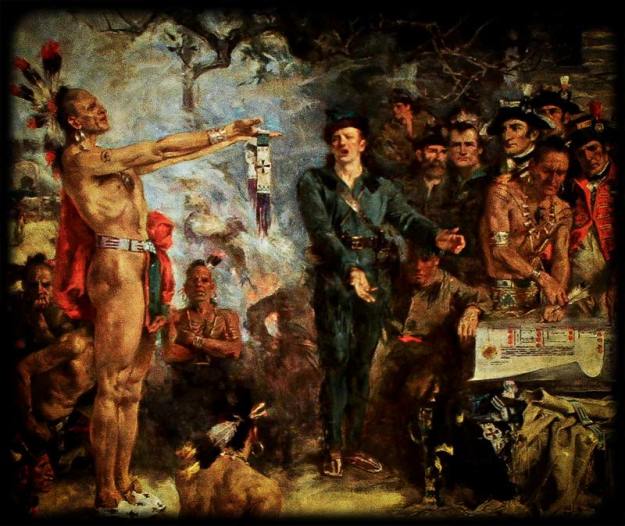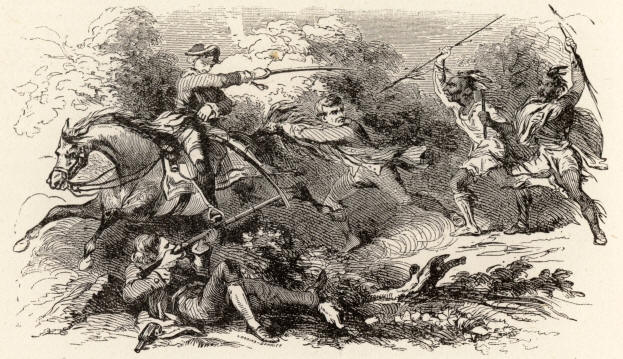
William Hogeland has written about the American Revolution era in three previous books, THE WHISKEY REBELLION, DECLARATION, AND FOUNDING FINANCE. His latest book, THE AUTUMN OF THE BLACK SNAKE: THE CREATION OF THE U.S. ARMY AND THE INVASION THAT OPENED THE WEST, published by Farrar, Strouse, Giroux in 2017, goes in depth into the history surrounding the American Revolution, and particularly a major defeat of the new United States, in fact the greatest defeat effected by North American indigenous peoples in the history of this continent. But few have heard about it, much less the individuals who made it happen. William Hogeland, is determined to remedy this.
First a bit of history: On this date, July 19th, in 1848, the Seneca Falls Convention was convened. It was the first women’s rights convention, eventually leading after more than 7 decades to, among other things, the 19th Amendment granting women’s right to vote in the U.S. 
And on July 19th 1692, 8 people were found guilty of witchcraft and hanged in Salem, Mass., including Rev. George Burroughs, the only minister to be executed. 
But now, we’ll fast forward a hundred years to “more enlightened times,” when the American Revolution had been won, and the power elites of that era were looking West across the Appalachian Mountains to so-called “vacant lands” for speculation and expansion. With only one problem, that being the people who had been living there for millennia didn’t agree that it was vacant.

A young George Washington explored, surveyed and speculated in lands west of the Appalachians, in the process becoming one of the causes of the Seven Years War – the first global war, causing over a million casualties – and also enhancing his own career and making his fortune.
The tobacco export business required ever more new lands for planting, due to severe, rapid depletion of the soil, hence the lust for more and more new land to plant.
 Thomas Jefferson provided an evolving legal theory of Free Holding, dating back to the Anglo Saxon invasion of England, and disavowing the right of kings to grant tenure of lands, which had begun with the Norman Invasion. He believed anyone could take and hold any land without the permission of a sovereign, i.e Direct Ownership, as long as it was “vacant” .
Thomas Jefferson provided an evolving legal theory of Free Holding, dating back to the Anglo Saxon invasion of England, and disavowing the right of kings to grant tenure of lands, which had begun with the Norman Invasion. He believed anyone could take and hold any land without the permission of a sovereign, i.e Direct Ownership, as long as it was “vacant” .
His advice to farmers concerning tobacco’s soil depletion: “Better to move than manure.”

Blue Jacket, a Shawnee leader, rallied his people to resist American Westward expansion.

Unlike Blue Jacket, Little Turtle believed that without British armaments, the Americans could not be decisively defeated. His efforts to procure them were unsuccessful.

Joseph Brant, a member of the Six Nation Iroquois Confederacy tried to be a diplomat and go-between among the warring factions – American, Indian and British. His efforts only resulted in ever diminishing trust and respect on all sides.
One treaty after another was made and broken by the Americans, although for the most part honored by the Indians. As westward encroachment increased – 10,000 immigrants coming down the Ohio River per month – war was inevitable.

General Arthur St. Clair, who suffered the greatest defeat by Indians in U.S. history, when as many as 1,200 men, women and children – out of 1,500 – were killed, including most of the officers of the U.S. military.

St. Clair’s defeat by the Miami Indians at the Battle of the Wabash River Nov. 4, 1791.

Exact numbers are impossible to determine, but according to David Johnson in Fort Amanda – A Historical Redress (1790-1815):
In a 3 hour battle, of 982 soldiers and 250 civilians, 757 were killed, 413 wounded, 34 unwounded, a Total Casualty Rate of 95%. Placed head to toe, the bodies of those killed at St Clair’s Defeat would measure approximately 4,400 feet.

Pingback: TOWN DESTROYER: Alan Snitow & Deborah Kaufman | Forthright Radio